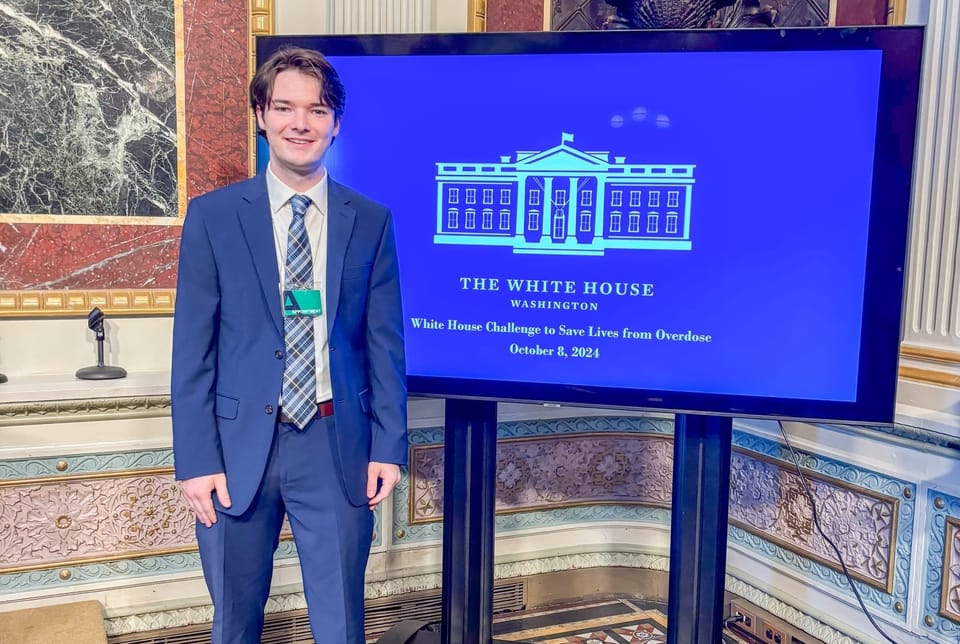On October 8, the Office of National Drug Control Policy and the Domestic Policy Council hosted the White House Challenge to Save Lives from Overdose, bringing together stakeholders nationwide to showcase their overdose prevention efforts. I was honored to represent the Carolina Harm Reduction Union, a peer-to-peer collegiate harm reduction program I co-founded and currently lead as executive director.
The event, in line with the Biden-Harris administration's call for a whole-of-society approach to the overdose epidemic, featured three panels exploring how communities, workplaces, and entertainment venues can play a role in prevention. While the ONDCP highlighted many organizations' commitments in a fact sheet, the event underscored the diverse strategies groups across different sectors employ to tackle this issue.
One of my highlights was hearing from Donna Parks Hill, who traveled from our home state of North Carolina to represent the North Carolina Council of Churches (NCCC). The NCCC has been working with faith communities across the state to bridge faith, health, and justice, including overdose prevention.
I also appreciated the focus on how unions and companies can collaborate to create safer workplaces. The Washington Post reported that 1 in 5 people who died from an overdose in 2020 worked in construction or the restaurant industry. The San Francisco Entertainment Commission, International Union of Painters & Allied Trades (IUPAT) District Council 35, and the Association of Flight Attendants-CWA (AFA) demonstrated how organizations can take proactive steps to integrate harm reduction practices and protect their members from the risks of overdose in their respective industries.
Reflecting on the event, one of my biggest takeaways is how much the conversation around naloxone, overdose prevention, and harm reduction has shifted in recent years. As a kid, I remember hearing about so-called "Narcan parties," where people were supposedly gathering to intentionally overdose—an idea as fictitious as it was harmful. To now see the White House hosting an event centered on naloxone, with speakers from the MLB discussing how their teams travel with it, and video messages from Samuel L. Jackson and Robert De Niro endorsing its use, shows just how much things have changed.
But that change has come as we’ve lived through the deadliest days of the overdose epidemic. As a 22-year-old, I’ve never known a time before this crisis—only times when it worsened. For many of us in this work, the growing statistics represent our loved ones. Despite a recent 10% decrease in overdose deaths, this trend isn’t universal, and rates continue to rise among Indigenous, Black, and Hispanic communities.
This serves as a stark reminder that while overall trends may be improving, our work is far from done. The conversation around naloxone and harm reduction has evolved, but we must continue pushing for equitable access to these life-saving tools and ensure that no community is left behind. The fight to save lives is ongoing, and it’s up to all of us to maintain this momentum and ensure that progress reaches everyone.

